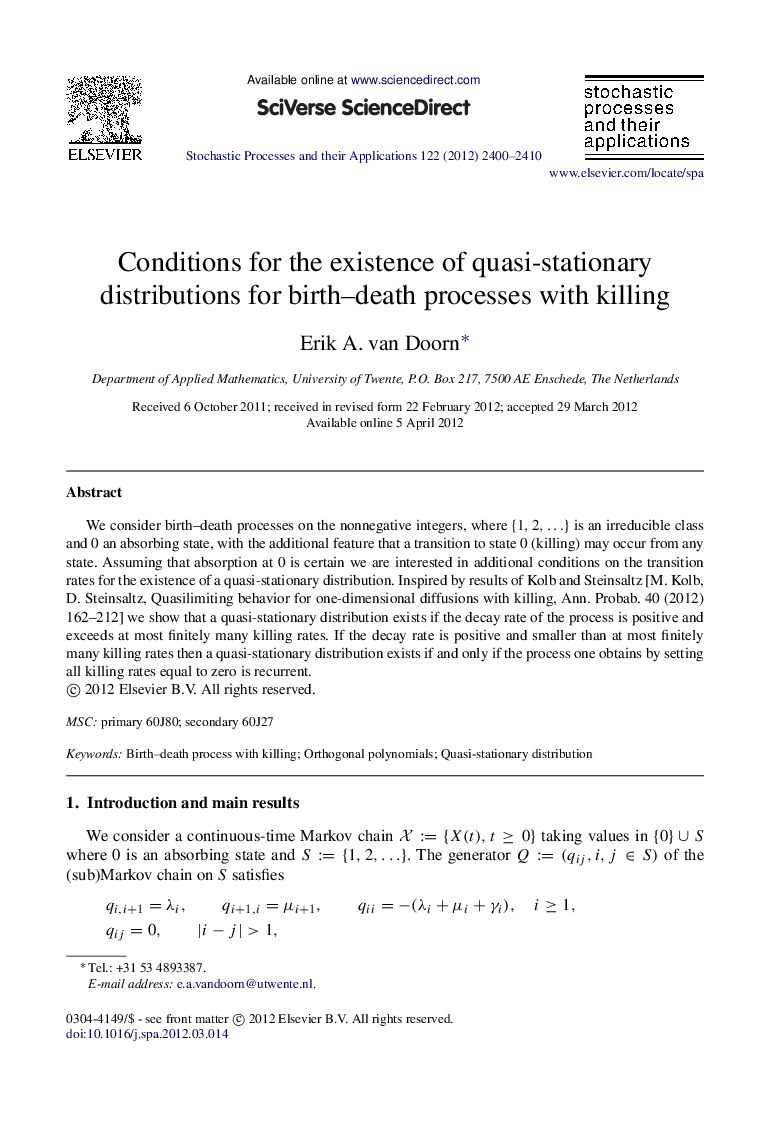| Article ID | Journal | Published Year | Pages | File Type |
|---|---|---|---|---|
| 1155764 | Stochastic Processes and their Applications | 2012 | 11 Pages |
We consider birth–death processes on the nonnegative integers, where {1,2,…}{1,2,…} is an irreducible class and 0 an absorbing state, with the additional feature that a transition to state 0 (killing) may occur from any state. Assuming that absorption at 0 is certain we are interested in additional conditions on the transition rates for the existence of a quasi-stationary distribution. Inspired by results of Kolb and Steinsaltz [M. Kolb, D. Steinsaltz, Quasilimiting behavior for one-dimensional diffusions with killing, Ann. Probab. 40 (2012) 162–212] we show that a quasi-stationary distribution exists if the decay rate of the process is positive and exceeds at most finitely many killing rates. If the decay rate is positive and smaller than at most finitely many killing rates then a quasi-stationary distribution exists if and only if the process one obtains by setting all killing rates equal to zero is recurrent.
